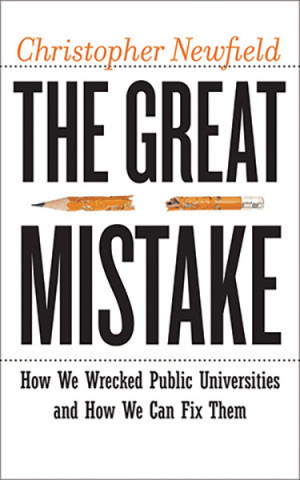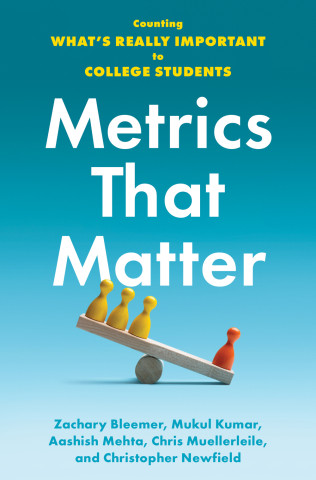 |
| Mosteiro de Santa Clara-a-Nova, Coimbria, Portugal on April 26, 2025 |
When Newsom first came into office in 2019, the state had a projected $20 billion surplus, which allowed Governor Newsom to substantially boost spending for public higher education as part of what he called a “California for All” budget for 2019-20.
And in 2022, with the state of California still receiving substantial CARES Act funding from the federal government, Newsom negotiated a 5-year “compacts” with the University of California and California State University systems that committed him to advocating for 5% annual increases to UC and CSU budgets. In exchange, the school systems committed to increase enrollment of California residents and increase student retention and graduation rates.
Though the compacts were legally nonbinding, they promised a sense of stability and modest recovery to UC and CSU after decades of inadequate and unpredictable funding. Unfortunately, they would soon be shredded because of a catastrophic accounting error.
Years of Austerty to Pay for Budget Mismanagement
According to CalMatters reporting, during the same legislative session that Governor Newsom negotiated the compacts, budget analysts working in his Department of Finance massively overestimated tax revenue for future years. They treated an anomalous spike in income taxes as normal, and over-estimated state revenue in future years by $200 billion per year. Legislators relying on these projections believed that they were balancing the state’s budget in 2022, and thereby set the state on a course to spend hundreds of billions of dollars more than it would collect in taxes.
As the effort to undo the damage of faulty budget projections continued into 2024, Governor Newsom proposed “deferring” funding increases in the compact to future years. UC and CSU leaders successfully negotiated to receive a modest increase to their general funds in 2024-25, but in exchange for accepting an 8 percent cut in 2025-26. Since the Governor and the state legislature were also proposing an 8 percent cut to other state agencies, the shared sacrifice seemed fair. The compact was temporarily saved, but the Governor’s commitment to it was effectively over.
Governor Puts Majority of Budget Cuts Onto Public Universities
Budget cuts negotiated in 2024 seemed like a done deal. Then something unexpected happened: new, more optimistic revenue forecasts came in, and the state of California entered 2025 with a projected $363 million budget surplus.
The Governor could have proposed to use some of this money to give a reprieve to the UC and CSU systems, or try to sustain the compact another year.
Instead, the Governor’s January budget proposal reduced planned cuts to state agencies, while leaving the 8 percent cut and compact deferral in place for UC and CSU.
As the Legislative Analyst Office has highlighted, this move increased state government spending by $2.4 billion over the 2024 budget deal. The Governor also proposed increasing discretionary spending by $507 million, and proposed $150 million in new tax breaks for 2025-26.
To pay for this new spending, as well as cover billions of dollars of unexpected Medi-Cal expenses and rising costs for other programs, the Governor proposes to withdraw state reserves by about $7 billion in 2025, leaving $17 billion for next year. Remarkably, the Governor did not propose using any of those reserves to prevent or reduce cuts to public universities.
Indeed, whereas the State’s Special Fund for Economic Uncertainties is normally kept at $3.5-4 billion, the Governor proposed to increase that fund to $4.5 billion. If the Governor had simply thought to keep it at a normal $3.75 billion, he could have eliminated cuts to the UC and CSU system entirely for 2025-26.
The rhetoric about the state budget in Sacramento is pessimistic. Concern that Trump’s reckless actions will weaken the economy further add to a sense of foreboding. Cuts to essential services seem inevitable, and this rhetoric of inevitability undermines politicians’ willingness to vote against the Governor’s proposed budget.
Staff for the California Assembly’s subcommittee on education finance have instructed legislators that even though “CSU appears to be facing a fiscal crisis,” and “UC clearly faces significant financial challenges,” politicians should focus their hearings less on stopping the cuts and more on how the school systems “will weather increasing costs and potentially declining state and federal revenue.”
This fatalism is baffling— more cowardice than analysis. Decisions made by the Governor demonstrate that the need for cuts to higher education has been manufactured by treating UC and CSU differently than other state agencies. While state budget cuts may be necessary, they are being spread unevenly for political reasons, not financial ones.
As Jason Sisney, the budget advisor to the California Assembly Speaker, recently wrote, the July 2024 budget deal was that budget cuts would be equitably distributed across state agencies, and UC and CSU cuts would make up 22 percent of the state’s projected budget shortfall. Instead, Governor Newsom wants to increase spending, increase tax breaks, reduce cuts to state agencies, drawn down reserves, and still leave cuts to UC and CSU in place to cover 53 percent of the state’s resulting budget deficit.
In other words, the Governor is proposing balancing the state’s budget on the backs of its four-year college students. This will take the form of increased class sizes, increased tuition, and increased debt, and possibly even one or more CSU campus closures and mergers.
Can Democrats Stand Up to Their Governor?
On April 25, 2025, State Senator Catherine Blakespear, who describes UC San Diego as “in the heart of my district”, sent an email to constituents titled “Fighting for UC.” In it, she decried the Trump administration’s research cuts to UCSD, and pointed out that UCSD had already implemented a hiring freeze and was reducing graduate student enrollment.
What Blakespear failed to mention is that she has declined to sign onto a letter from more than 60 of her colleagues in the state legislature opposing cuts to the University of California’s budget. In fact, she didn’t mention the Governor’s proposed budget cuts at all, or encourage her constituents to speak out against them.
Blakespear made it seem as if UCSD hiring freezes and budget cuts were coming from the federal government controlled by Republicans, when much if not most of it is currently coming from the state government controlled by Democrats.
Like many Democrats, Blakespear is happy to oppose Donald Trump’s policies. But when it comes to standing up to a Democratic Governor, will she or others really “fight for UC”?
In my conversations with multiple state legislators this term, both Republican and Democrat, I have yet to find a single one who wants to cut the UC or CSU budget. I have yet to find a single one who wants the quality of instruction to go down while the cost of tuition goes up.
Many California state legislators graduated from one or more public colleges or universities in the state. They know that California voters are mostly proud of their public higher education system, and see it as a core part of the services that the state provides.
And yet, when you ask a California state legislator if they’d vote against a budget that includes cuts to the UC and CSU, most Democrats— even those who sign letters opposing the cuts— will tell you that they have no choice but to vote for whatever budget the Governor, the Assembly Speaker and the Senate leader negotiate behind closed doors. Their ability to move legislation requires ceding their agency on the budget, or else be ostracized by their party leadership.
When you meet with the staff of the Assembly or Senate leaders, you get the reverse message: the leadership needs to hear as much as possible from members before they head into negotiations about the need to protect higher education.
Few will commit. Almost everyone is equivocal. One legislator I met with repeatedly asked if we could talk about how the state legislature could oppose Trump’s attacks on higher education, so we could avoid discussion of the state budget altogether.
And some share legislators whispers that because the Governor provided a 6 month delay to people impacted by wildfires to file their income taxes, and a 12 month delay to file their property taxes, his “revised” budget proposal, coming very soon, is likely to be even worse.
Not treating delays in revenue collection as shortfalls is also somehow off the table.
Taking their cues from elected leadership over the past couple years, UC has already increased non-resident student tuition 10 percent, and the CSU system is in the midst of raising tuition 34 percent over 5 years. Who knows what more may be coming?
Fighting for Higher Ed at the State and Federal Level
Shared sacrifice may be necessary during times of budget woes, even ones created by administrative error. Yet we as college teachers, students, staff and community members need to tell our politicians that balancing the budget on the backs of college students is totally unacceptable.
For decades, politicians across the US, regardless of political party, have consistently raided the budgets of their public universities during recessions, or to cover the rising costs of health care, corrections, and other services they don’t want to tax people for. Politicians may publicly bemoan tuition increases. But they secretly depend on increasing student debt to balance state government budgets.
That game may be coming to an end. It ultimately relies upon federal grants and loans to students that Republicans are threatening to eviscerate in what the Debt Collective has called “the most dangerous higher education bill in history.” And it relies upon students believing that the inferior education provided to them in increasingly large and online classes is worth going into debt.
It's up to campus labor unions to invest their resources into organizing not just their own members but organizing students and community members to contact their legislators to oppose state government budget cuts.
It would be great if the defense of public higher education only required standing up to Donald Trump. But for now, we also have to stand up to Democrats whose support for public higher education is always hostage to their other priorities.
Contact your legislator to Stop the Cuts!
· UC-AFT: For teachers and librarians represented by AFT
· Teamsters: For UC and CSU clerical workers and building trades
· University of California: https://www.universityofcalifornia.edu/get-involved/advocate/state-budget
· California State University: https://www.calstate.edu/impact-of-the-csu/government/Advocacy-and-State-Relations/Pages/Budget-Advocacy.aspx




0 comments:
Join the Conversation
Note: Firefox is occasionally incompatible with our comments section. We apologize for the inconvenience.